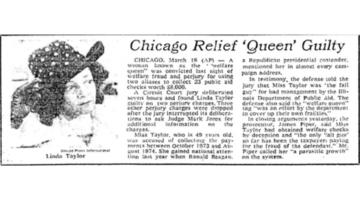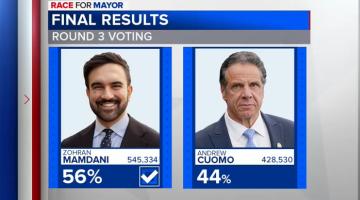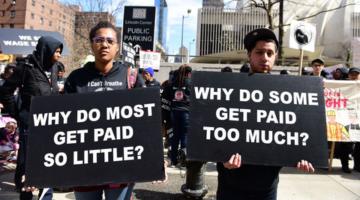The Working Families Party presents itself as a political party that works for the interest of working class people. However, the party behaves more like a sheepdog for the Democratic party.
Originally published in Redneck Gone Greeen.
Introduction
The United States has long been dominated by a rigid two-party system, but third parties have played a critical role in shaping political discourse, policy, and electoral strategy.
Third parties have played a vital role in advancing progressive politics in the U.S. For instance, the Liberty Party and Free Soil Party both helped to push the abolition of slavery into mainstream politics. The Populist Party championed economic reforms that influenced later policies like Social Security. The Socialist Party fought for labor rights, leading to the New Deal. The Progressive Party and others supported women’s suffrage. All said, these parties, despite some of their political and social contradictions, forced major reforms that we now take for granted.
Today, the Working Families Party (WFP) presents itself as an independent political and organizing force advocating for economic and social justice, leveraging the unique electoral mechanism of fusion voting to maximize its impact. Fusion is an electoral system where multiple political parties can endorse the same candidate, allowing that candidate to appear on the ballot under different party lines,
However, a closer examination reveals that WFP is not a genuinely independent third party but rather an arm of the Democrat Party, engaging in Democrat Party entryism—a strategy where external organizations infiltrate a larger party to influence its direction from within.
The Origins and Growth of the Working Families Party
Founded in New York State in 1998,, WFP was established by a coalition of labor unions, community organizations, and progressive activists. Unlike traditional third parties that run standalone candidates, WFP has strategically used fusion voting—a system allowing candidates to be nominated and placed on the ballot by multiple parties —to push the Democrat Party leftward while maintaining an independent identity. However, in practice, WFP almost exclusively endorses Democrats rather than backing independent leftist candidates, demonstrating its allegiance to the party establishment and showcasing its characterization as an independent entity is performative at best.
Fusion Voting: A Historical Overview
Fusion voting was a common electoral practice in the 19th century, allowing multiple parties to endorse the same candidate, thus consolidating opposition to dominant political forces. This system enabled minor parties, particularly labor and progressive movements, to wield significant influence without the “spoiler effect.”
During the late 19th century, fusion voting helped the Populist Party and other progressive movements challenge corporate power and force economic issues onto the national agenda. However, as fusion voting began to threaten the political duopoly, major parties—especially Democrats—moved to ban it in most states by the early 20th century, ensuring third parties would struggle to gain traction.
The Working Families Party as an Arm of the Democrat Party
While the WFP claims to be a third party advocating for progressive policies, its endorsements overwhelmingly favor establishment Democrats over genuine leftist or independent candidates. This pattern reveals that WFP functions as an auxiliary of the Democratic Party rather than as an independent political force.
Endorsement of Establishment Democrats Over Genuine Leftists
-
In New York’s 2018 gubernatorial election, WFP initially backed Cynthia Nixon, a progressive challenger to incumbent Democratic Governor Andrew Cuomo. However, after Cuomo won the Democratic primary, WFP switched its endorsement to Cuomo, demonstrating its unwillingness to challenge Democratic Party leadership in a meaningful way.
-
In the 2020 Democratic presidential primary, the WFP endorsed Elizabeth Warren over Bernie Sanders, despite Sanders having broader working-class support and a more transformative agenda. Once Warren dropped out, WFP quickly aligned behind Joe Biden, who represents the Democratic establishment.
-
In the 2021 New York City mayoral race, WFP backed Maya Wiley, a former adviser to Democratic Mayor Bill de Blasio, rather than supporting an independent leftist candidate who would challenge the system more directly.
-
In the 2022 New York gubernatorial election, WFP endorsed Kathy Hochul, Cuomo’s former lieutenant governor, instead of rallying behind a more progressive alternative, further illustrating its commitment to Democratic Party loyalty.
-
In the 2022 Race for New York’s 10th Congressional District, WFP endorsed the candidacy of former State Senator, Yuh-Line Niou, a known and well regarded progressive. Ms. Niou lost by less than 1,300 votes in a crowded primary field to centrist Democrat, Dan Goldman. Rather than run as a third-party candidate in the general election, WFP convinced Ms. Niou not to run citing, “the need to defend democracy.”
These concrete examples make it clear that the WFP consistently and repeatedly prioritizes aligning with the Democrat Party over building independent leftist power. WFP functions as little more than a progressive facade for Democrat establishment politics.
The Curious Case of the Philadelphia City Council
WFP advocates will point to Philadelphia as proof that they are not merely an arm of the Democrat Party, because y two at-large Philadelphia City Council members are WFP. However, this is not due to WFP’s willingness to run candidates against Democrats.. Rather, this is the result of Philadelphia’s Home Rule Charter that utilizes a Limited Voting system that guarantees at least two third/minor party candidates are elected to the 10-person body. While the Philadelphia Home Rule Charter provides greater opportunities to elect third party candidates, it does not provide an opportunity for WFP to claim it is an independent third party.
The Role of Third Parties in American Politics
Despite immense institutional barriers, third parties have played an indispensable role in American democracy. They introduce new ideas, pressure dominant parties to adopt progressive policies, and serve as political incubators for movements that later shape mainstream politics.
-
Policy Innovation: Third parties have historically introduced transformative policies later adopted by major parties. The Progressive Party of the early 20th century championed women’s suffrage, direct election of senators, and labor protections—policies that later became mainstream.
-
Expanding Political Debate: Figures like Eugene Debs of the Socialist Party forced the national conversation on workers’ rights and economic justice, influencing New Deal policies.
-
Holding Major Parties Accountable: The Green Party has pressured Democrats on environmental policies including, but not limited to, the Green New Deal,, while Libertarians have challenged Republicans on civil liberties.
However, the WFP does not function as a traditional third party in this sense. Instead of pressuring the Democrat Party through independent electoral campaigns, it operates within the party structure, endorsing its candidates and maintaining its allegiance to Democratic leadership and elements of the party’s corporate donor base.
Democrat Party’s History of Undermining Third Parties
The Democratic Party presents itself as a defender of democracy and voting rights, yet its history is riddled with efforts to crush independent and third-party organizing. This is particularly evident in its treatment of progressive movements and leftist challengers.
-
Blocking Ballot Access: Democrats have supported draconian ballot access laws making it nearly impossible for third parties to qualify. In New York, under Governor Andrew Cuomo, ballot qualification thresholds were tripled in 2020..
-
Legal Challenges and Smear Campaigns: The Democrat Party establishment has frequently resorted to legal maneuvers to remove third-party candidates from ballots, as seen in multiple attempts to block Green Party candidates.
-
Co-opting and Sabotaging Movements: Rather than embracing progressive demands, Democrats often absorb third-party rhetoric only to neutralize its momentum. For example, Bernie Sanders, despite running within the Democrat Party, saw his 2016 and 2020 campaigns sabotaged by DNC leadership, corporate media, and superdelegate manipulation.
Conclusion: The Working Families Party as Democratic Party Entryism
While the WFP claims to be an independent third party fighting for working-class interests, its history of endorsing establishment Democrats over genuine leftists suggests otherwise. Rather than building a truly alternative political force, WFP functions as a vehicle for Democrat Party entryism.—By consistently backing Democrats, even when more progressive or independent candidates are available, WFP reinforces the Democrat Party’s dominance while giving the illusion of an independent working-class movement. True political independence requires breaking away from the Democrat Party’s grasp, not reinforcing its power under the guise of a genuine progressive alternative.



















